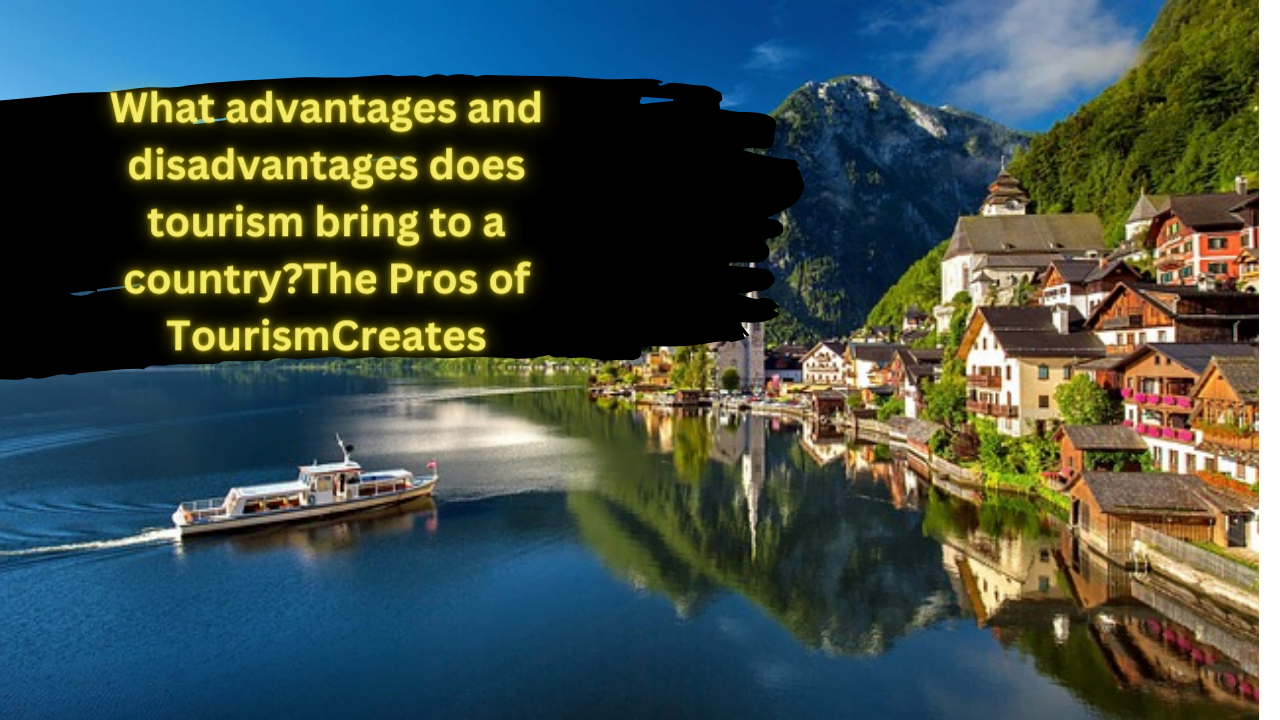Tourism, the act of traveling for pleasure, holds a unique position in the global landscape. While it promises economic prosperity and cultural exchange, it also poses potential pitfalls for the environment and local communities. To understand this complex duality, we must carefully weigh the advantages and disadvantages that tourism brings to a country.
Exploring the Advantages and Disadvantages of Tourism
Unpacking the Advantages: Tourism’s Positive Impacts
Economic Engine: Tourism acts as a powerful economic engine, generating revenue through various channels. Foreign visitors contribute significantly to a country’s GDP through spending on accommodation, transportation, food, souvenirs, and activities. This influx of foreign currency helps balance trade deficits, strengthens the local currency, and fuels further economic growth.
Tourism’s Two Sides: A Look at the Economic, Social, and Environmental Impacts
Employment Opportunities: The tourism industry is a prolific job creator. Hotels, restaurants, transportation services, tour operators, souvenir shops, and countless other businesses rely on tourism to thrive. This translates to increased employment opportunities for local populations, boosting their standard of living and contributing to poverty reduction.
Infrastructure Development: To cater to tourist needs, governments often invest in infrastructure development. Improved roads, bridges, airports, and public transportation systems benefit not only tourists but also local residents. These upgrades enhance accessibility, facilitate trade, and improve the overall quality of life.
Striking a Balance: Sustainable Tourism for a Thriving Future
Cultural Exchange and Understanding: Tourism fosters cultural exchange and understanding. As visitors immerse themselves in local traditions, cuisine, and customs, they develop a deeper appreciation for diverse perspectives and ways of life. This cross-cultural interaction can break down stereotypes and promote tolerance, fostering global peace and understanding.
Conservation Efforts: Tourism revenue can be directed towards conservation efforts, protecting valuable natural and cultural heritage sites. National parks, historical monuments, and endangered species can benefit from increased funding generated by tourism, ensuring their preservation for future generations.
Examining the Disadvantages: Potential Drawbacks of Tourism
Environmental Degradation: Unmanaged tourism can lead to environmental degradation. Increased waste generation, water pollution, deforestation, and wildlife disturbance are common concerns. The pressure to accommodate tourists can strain natural resources and disrupt delicate ecosystems.
Tourism: Boom or Bust? Unpacking the Pros and Cons
Cultural Commodification: In catering to tourist preferences, local cultures can become commodified, losing their authenticity. Traditional practices may be diluted or exaggerated for entertainment purposes, compromising their meaning and significance for local communities.
Strain on Local Resources: Increased tourist influx can strain local resources such as water, energy, and infrastructure. This can lead to shortages and price hikes, disproportionately impacting local residents who may struggle to compete for essential services.
Economic Dependence: Overreliance on tourism can make a country’s economy vulnerable to external shocks. Economic downturns, political instability, or natural disasters can significantly impact tourist arrivals, leading to job losses and economic hardship.
Beyond Paradise: Navigating the Complexities of Tourism
Social Disparity: Unequal distribution of tourism benefits can exacerbate social disparities. If local communities are not adequately involved in tourism development, the economic gains may primarily benefit foreign investors and large corporations, widening the gap between rich and poor.
Striking a Balance: Sustainable Tourism for the Future
Recognizing both the advantages and disadvantages of tourism is crucial for its sustainable development. By implementing responsible practices, we can maximize the positive impacts while minimizing the negative ones. This requires a multi-pronged approach:
Community Involvement: Local communities should be actively involved in tourism planning and development, ensuring they share in the benefits and have a say in how their culture and environment are represented.
Environmental Protection: Sustainable tourism practices that minimize waste, conserve resources, and protect ecosystems are essential. Eco-tourism initiatives and responsible travel campaigns can encourage respectful interaction with the environment.
Cultural Preservation: Efforts to preserve cultural authenticity and promote genuine cultural experiences are crucial. This involves respecting local customs and traditions, avoiding cultural appropriation, and ensuring local communities control the narrative of their heritage.
Economic Diversification: Diversifying the economy beyond tourism can reduce vulnerability to external shocks. Fostering other industries and promoting local businesses can ensure a more resilient and sustainable economic model.
By embracing responsible tourism practices that prioritize community involvement, environmental protection, cultural preservation, and economic diversification, we can unlock the positive potential of tourism while mitigating its drawbacks. This holistic approach allows us to enjoy the benefits of tourism without compromising the well-being of local communities and the environment, ensuring a brighter future for all.
